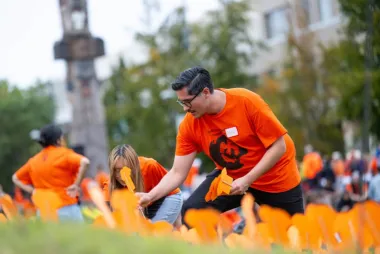Building more inclusive cities through data science
Everyone should have access to hospitals, schools, and other essential services. Using data science and machine-learning techniques, a team at UBC's School of Community and Regional Planning has created a tool to encourage equitable policy and planning.

Edited: June 24, 2022
In a fair society, everyone — young or old, high-income or low- — would have equal access to hospitals, schools and other essential services by public transit. Such a society may soon be within closer reach thanks to a new computer tool being developed and trialed at the University of British Columbia.
Driven by data science and machine learning techniques, the tool enables cities to use open-source data and software to determine how investments in public transportation systems and essential service facilities could be distributed more equitably.
“In every municipality, certain groups of people are unable to benefit from key service infrastructure as fully as others,” says Martino Tran, a professor at UBC’s School of Community and Regional Planning and director of the study. “By further developing these data science tools, the goal is to help cities better understand who these vulnerable groups are and make planning and policy decisions accordingly.”
Using the tool to analyze and compare Vancouver, Seattle and Portland, the team discovered that while Vancouver generally offers timelier access to hospitals and walk-in clinics by public transit — likely due to its compact size and the high density of both its population and transportation network — it also imposes higher transportation costs on its residents.
The study further found that all three cities can improve healthcare access for vulnerable populations like seniors and low-income residents — particularly seniors living in low-income areas, who not only must bear disproportionately high transportation costs, but also have specialized mobility and healthcare needs.
“The members of our communities who rely on transportation and healthcare services most heavily are the ones who have the greatest difficulty accessing them,” says Tran. “As cities around the world spend billions of dollars overhauling their transportation systems, our research and data tools aim to help better balance urban economic growth with the rights of marginalized people.”
In addition to highlighting the diversity of mobility needs existing within cities, the study demonstrates the importance of open datasets to planning research. Relevant public data is currently housed in diverse repositories and formats, but gathering it into centralized repositories in consistent formats would go a long way towards helping planners make our communities more inclusive places in which to live.
The UBC team is currently developing a computer model that will help cities predict how specific planning and policy decisions would impact access to healthcare, education and even employment, including among underserved populations.
Learn More
To learn more about equity-focused urban predictive analytics initiatives at UBC, visit Martino Tran's SCARP page or his website.


